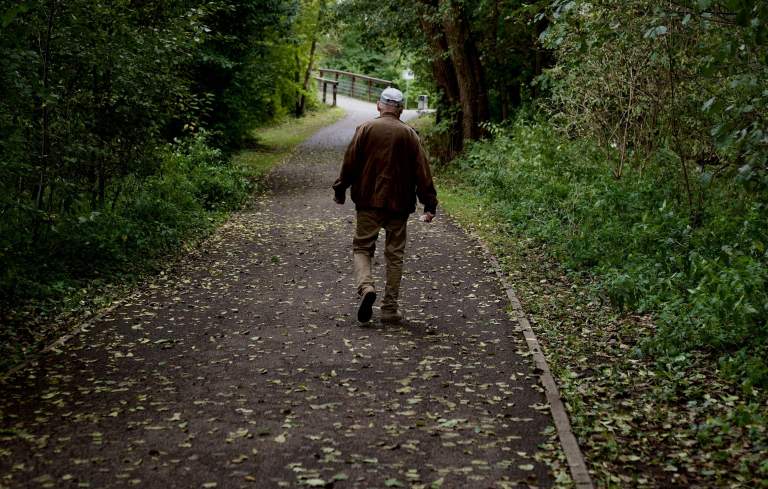Did You Know?

Exercises that Increase Bone Density Part 1
Posted April 17, 2025
Not all exercises are equally effective at increasing bone density. Some exercises provide stronger benefits than others.
Exercise is essential for maintaining and improving bone health. However, not all exercises are equally effective at increasing bone density. Weight-bearing and resistance exercises are particularly beneficial for stimulating the formation of new bone tissue. Here are some exercises that help increase bone density:
Walking
Walking is a normal-impact exercise that maintains but does not increase bone density.
Rucking (Loaded Backpack Walking)
Rucking, or walking with a loaded backpack, increases bone density. A standardized load carriage task (3.1 miles at 3.4 miles/hr., wearing a 50 lb. torso-borne vest) showed increased bone density after 10 weeks of resistance and load carriage training. Start out with 5-10% of your body weight in the backpack.
Weighted Vest
Like rucking, wearing a weighted vest while walking can also increase bone density. Start out with 5-10% of your body weight in the vest.
Running
Running works well to increase bone density in pre-menopausal women because of the hormonal factors that support bone health, but these effects diminish after menopause.
Cycling
Cycling increases hip bone density but does not affect spine bone density. This is likely due to the seated position and leaning forward, which increase lumbar disc pressures but do not stimulate bone growth in the spine.
Elliptical
The elliptical machine does not significantly impact bone density. It’s a low-impact exercise with double limb support on the pedals and no heel strike or push off as seen with walking or running, and so has minimal effect on bone health.
Weight Training
Weight training increases bone density when done with low reps and adequate weight. It is most effective when performed three times a week for 12 months and is especially beneficial for post-menopausal women. Avoid using machines—namely seated machines—which increase spinal disc pressure and reduce hormone production. Even without bone mineral density gains, weight training alters trabecular bone columns, making bones more resistant to fractures, and it improves strength and thus balance, which reduces fall risk.
Weight-bearing and resistance exercises are crucial for maintaining and increasing bone density. Walking, rucking, and weight training all contribute to bone health and are key activities to consider incorporating into your routine.
Have questions? Call our office for a consultation (716) 247-5320.
References
Walking
- Bolam K. A., van Uffelen J. G. Z., and Taaffe D. R., The effect of physical exercise on bone density in middle-aged and older men: a systematic review, Osteoporosis International. (2013) 24, no. 11, 2749–2762.
- Martyn-St James M. and Carroll S., Meta-analysis of walking for preservation of bone mineral density in postmenopausal women, Bone. (2008) 43, no. 3, 521–531.
- Ma D., Wu L., and He Z., Effects of walking on the preservation of bone mineral density in perimenopausal and postmenopausal women: a systematic review and meta-analysis, Menopause. (2013) 20, no. 11, 1216–1226.
- Watts N. B., Adler R. A., and Bilezikian J. P., Osteoporosis in men: an endocrine society clinical practice guideline, The Journal of Clinical Endocrinology & Metabolism. (2012) 97, no. 6, 1802–1822.
Rucking
- Wills JA, Saxby DJ, Glassbrook DJ, Doyle TLA. Sex-Specific Physical Performance Adaptive Responses Are Elicited After 10 Weeks of Load Carriage Conditioning. Mil Med. 2023 Mar 20;188(3-4):658-664. doi: 10.1093/milmed/usab470. PMID: 34791364.
Running
- Lane, N.E., Bloch, D.A., Jones, H.H., Marshall, W.H., Wood, P.D. and Fries, J.F., 1986. Long-distance running, bone density, and osteoarthritis. Jama, 255(9), pp.1147-1151.
- Lane, N.E., Bloch, D.A., Hubert, H.B., Jones, H., Simpson, U. and Fries, J.F., 1990. Running, osteoarthritis, and bone density: initial 2-year longitudinal study. The American journal of medicine, 88(5), pp.452-459.
- Kirk, S., Sharp, C.F., Elbaum, N., Endres, D.B., Mohler, J.G., Rude, R.K. and Simons, S.M., 1989. Effect of long‐distance running on bone mass in women. Journal of bone and mineral research, 4(4), pp.515-522.
- Lee, J.H., 2019. The effect of long-distance running on bone strength and bone biochemical markers. Journal of exercise rehabilitation, 15(1), p.26.
Cycling
- Abrahin, O., Rodrigues, R.P., Marçal, A.C., Alves, E.A.C., Figueiredo, R.C. and Sousa, E.C.D., 2016. Swimming and cycling do not cause positive effects on bone mineral density: a systematic review. Revista brasileira de reumatologia, 56, pp.345-351.
- Olmedillas, H., González-Agüero, A., Moreno, L.A., Casajus, J.A. and Vicente-Rodríguez, G., 2012. Cycling and bone health: a systematic review. BMC medicine, 10, pp.1-10.
- Warner, S.E., Shaw, J.M. and Dalsky, G.P., 2002. Bone mineral density of competitive male mountain and road cyclists. Bone, 30(1), pp.281-286.
Elliptical
- Goldschmidt, V., Elliptical Vs. Treadmill: Which Is Better For Your Bones?
- Sayer, A. and Tocci, K., Elliptical vs Treadmill: We Compare The Fitness Benefits.
- Moreside, J.M. and McGill, S.M., 2012. How do elliptical machines differ from walking: a study of torso motion and muscle activity. Clinical Biomechanics, 27(7), pp.738-743.
- Easton, J.D., 2021. Design, Construction, and Testing of a Differential Resistance Elliptical Exercise Machine (Master's thesis, The University of Alabama at Birmingham).